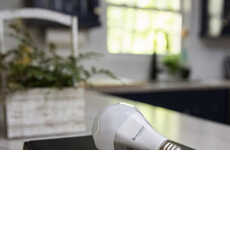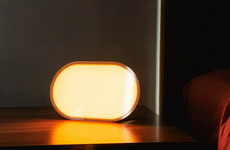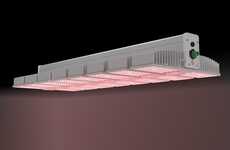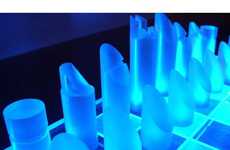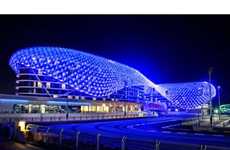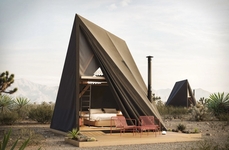
Siemens 1000 Lumen LED
Now you can light your whole house with a (literal) handful of bulbs! A few weeks ago, Siemens announced a one millimetre led bulb with an output of 1000 lumens. For those who aren't aware lumens measure brightness (candlepower), and Siemens says that "A 60-watt light bulb emits 730 lm, while a 50-watt halogen lamp has an output of approximately 900 lm". Data projectors start at about 1000 lumens (focused) - in other words this is a really bright, really tiny bulb!
The bulb is bright enough, in fact, to be used for room lighting. While the LED technology is still both nascent and expensive, this is a huge leap forward in terms of environmentally-friendly lighting, since LED bulbs typically do not contain mercury, do not produce UV rays, and last longer and consume less power than even CFL bulbs. Gizmodo gets really excited for these things, stating "LEDs [that] are bright enough to light our houses and last 10 times longer than even halogen technology. We're ready to upgrade". Unfortunately, it will be something like five years before this technology is able to affect your energy bill in any big way.
The bulb is bright enough, in fact, to be used for room lighting. While the LED technology is still both nascent and expensive, this is a huge leap forward in terms of environmentally-friendly lighting, since LED bulbs typically do not contain mercury, do not produce UV rays, and last longer and consume less power than even CFL bulbs. Gizmodo gets really excited for these things, stating "LEDs [that] are bright enough to light our houses and last 10 times longer than even halogen technology. We're ready to upgrade". Unfortunately, it will be something like five years before this technology is able to affect your energy bill in any big way.
Trend Themes
1. LED Lighting Technology Advancements - Siemens' new 1000 lumen LED bulb is a significant breakthrough in LED lighting, with the potential to replace traditional incandescent and halogen bulbs.
2. Environmentally-friendly Lighting Solutions - The use of LED bulbs, which do not contain mercury, produce UV rays, and consume less power than CFL bulbs, offers a more sustainable and energy-efficient lighting option.
3. Improved Brightness and Efficiency in Lighting - Siemens' one millimeter LED bulb with an output of 1000 lumens demonstrates the potential for brighter and more efficient lighting solutions for room lighting and data projectors.
Industry Implications
1. Lighting Industry - The lighting industry can explore the disruptive innovation opportunities in LED technology advancements to develop brighter, more energy-efficient, and longer-lasting lighting products.
2. Energy Industry - The energy industry can leverage the environmentally-friendly features of LED bulbs to promote energy conservation and reduce reliance on conventional lighting technologies.
3. Technology Industry - The technology industry can capitalize on the increased brightness and efficiency of LEDs to develop new applications in areas such as room lighting, data projectors, and other lighting solutions.
5.9
Score
Popularity
Activity
Freshness














